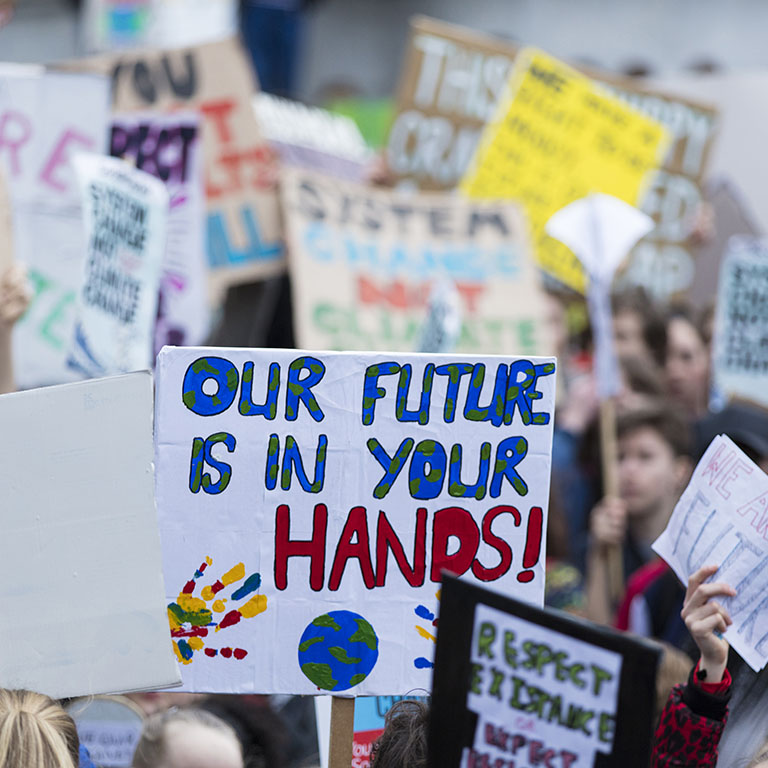
By Amy Barnes ,
Global Head of Energy & Power, Marsh
04/08/2024 · 6 minute read
Climate change is increasing health risks and costs for people and businesses worldwide. While regulators and organizations recognize that climate risk is a business risk and, to date, they have typically focused on opportunities to drive decarbonization efforts, a growing risk that cannot be overlooked is the impact climate change is having on workers’ health and safety.
Consider an office worker in Amsterdam, a firefighter in British Columbia, or a truck driver in Cairo. All will likely experience health and productivity implications due to climate change, whether from exposure to poor ventilation, wildfire smoke, or pollution. Health impacts can range from mild to severe, acute to chronic. For instance, a wildfire can lead to direct health harms such as heat stroke, asthma, and mental ill health. Over time, this may amount to indirect health issues such as worker absenteeism, reduced productivity, and increased healthcare costs. Climate change can also lead to increases in infectious diseases and injuries secondary to disasters. And by 2030, climate change is expected to cost US$2-4 billion per year in direct damage costs to health.
Business resilience relies on employee health and well-being. When people thrive, so do organizations and societies. The consequences of organizations overlooking this growing risk are significant, potentially spanning reputational, productivity, and economic costs. Fortunately, with foresight and preparation, an organization can protect its most valuable and vulnerable asset — its people — against climate-related health risks.
The impact of climate-related health incidents is already extensive. Furthermore, climate change health impacts are expected to intensify over time due to worsening air quality, deadlier heatwaves, and more frequent and severe natural disasters.
The Global Risks Report 2024 names extreme weather events as the top risk most likely to present a material crisis on a global scale this year. As these events become more frequent and widespread, the cost to businesses from disruption is expected to increase.
Across the US, for instance, high heat costs US$100 billion annually in reduced productivity, a figure expected to double by 2030. In Southern Europe, an average wildfire season leads to an annual production loss of €13-21 billion. Heat exposure in India led to the loss of 490 billion potential labor hours in 2022. All of these instances suggest that at the country and business level, preparedness efforts may be falling short.
Business strains due to climate hazards may include:
Not all organizations’ workforces will be affected by climate change in the same way. Much of your organization’s risk exposure will depend on where you operate, the working environment, and your supply chain. Different climate events impact health outcomes in different ways, as outlined by Oliver Wyman.
For instance, people risk can be found along your supply chain, especially if a tier-2 or tier-3 supplier has a workforce exposed to climate-related health issues. Extreme heat may mean factory or agricultural workers in another part of the world have a reduced ability to undertake work, while sectors such as construction and transport services — vital to supply chains — may also experience productivity losses, leading to operational challenges in industries reliant on these services. Additionally, transient workers may also be affected by natural disasters or extreme heat in their country of origin, which can lead to disruptions in their personal and professional lives.
Even if you are not in an industry with higher exposure to climate risk, it is important to consider how climate change affects your employees. Legislation and regulations may increasingly come into force to protect workers from issues such as extreme heat, such as the one mandated in California, which requires employers to take steps to protect outdoor workers from heat illness with water, rest, shade, and training.
Generally, two types of action are required: reactive (supporting employee well-being in the face of climate events) and preventive (helping to reduce the impact of climate change and thus the need for reactive action).
By acting early, organizations have an opportunity to minimize health harms and inequities and avert drastic and expensive changes in the future. Building resilience will include steps to identify and quantify risks, and collaborating with specialists to determine optimal mitigation, retention, and transfer strategies based on your specific exposures, as well as your risk and resilience objectives. For example:
Organizations can use innovative insurance solutions and risk management services to help protect their workforce from climate-related risks. In one example, Marsh McLennan and a consortium of insurance companies launched Blue Marble to provide parametric climate solutions to communities. Partnering with Nespresso, Blue Marble delivers weather insurance to coffee farmers when bad weather impacts coffee production, thereby easing the financial stress for many coffee-growing communities and improving supply chain resilience for coffee buyers.
Climate change is the biggest global health threat of the 21st century. Besides reducing carbon footprints, employers should make important and commonsense investments in workforce resilience. Given the clear links between climate and health harms, urgent action is vital. How organizations respond today will go a long way toward reducing risks and the need to take more drastic and expensive action tomorrow.
Legislation and regulations may increasingly come into force to protect workers from issues such as extreme heat, such as the one mandated in California, which requires employers to take steps to protect outdoor workers from heat illness with water, rest, shade, and training.

Article,Featured insight
12/01/2025